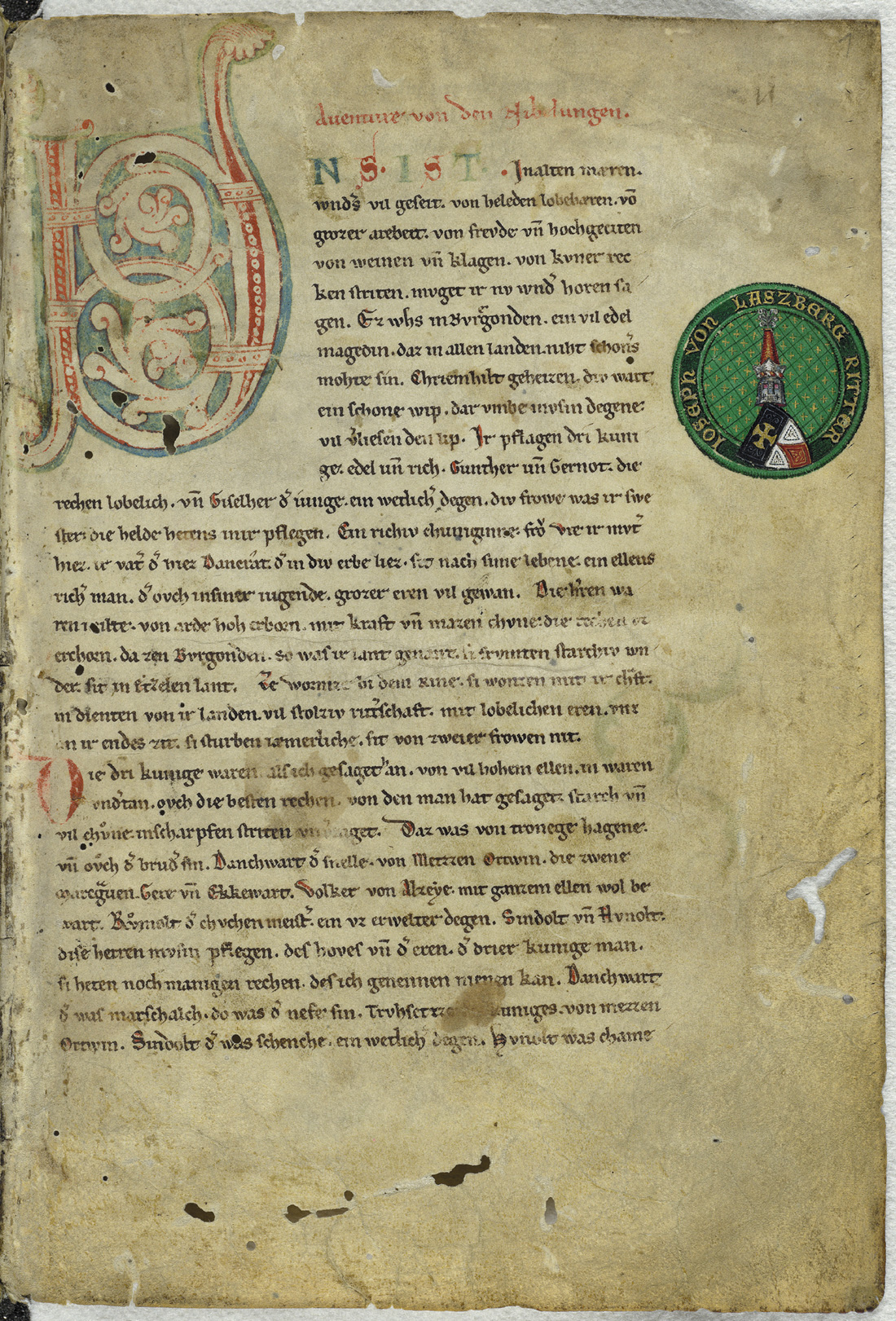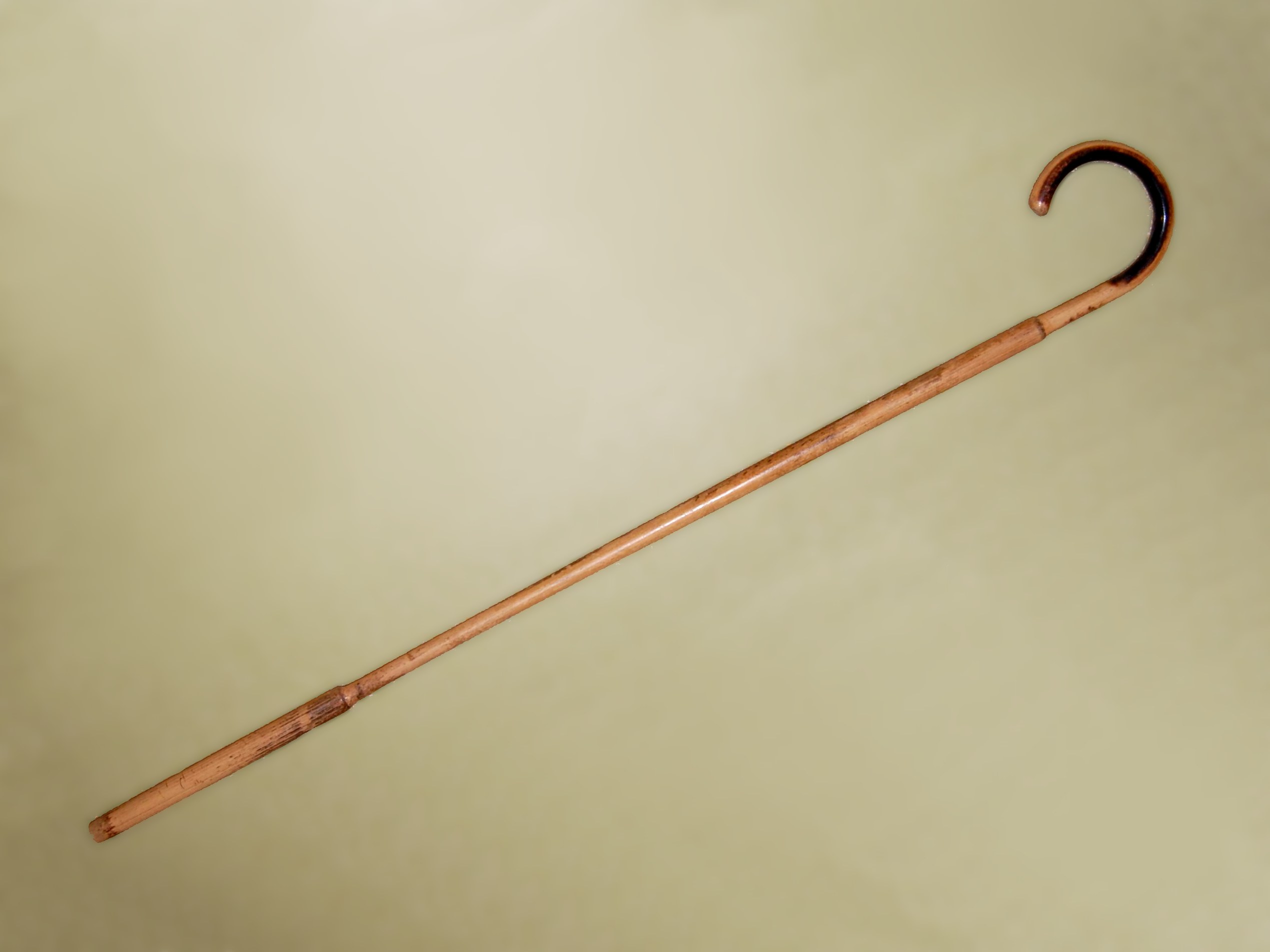|
Balmung
In Norse mythology, Gram (Old Norse ''Gramr'', meaning "Wrath"), also known as Balmung or Nothung, is the sword that Sigurd used to kill the dragon Fafnir. It is primarily used by the Völsungs in the ''Volsunga Saga''. However, it is also seen in other legends, such as the ''Thidrekssaga'' in which it is wielded by Hildebrand. Depending on the story and source material, Gram may have other names. In '' The Nibelungenlied'' it is named Balmung. In Richard Wagner's work, ''Der Ring des Nibelungen'' (''The Ring of the Nibelung''), it is referred to as Nothung. Description Nowhere in the ''Volsunga Saga'' is a clear description of Gram given, but there is enough scattered throughout the story to draw a picture of the sword. Sigurd's weapons, Gram included, are described as being "all decked with gold and gleaming bright". Depending on how the text is read, the sword may or may not have a dragon emblazoned on it and/or depending on the translation been "brown of hue". Histo ... [...More Info...] [...Related Items...] OR: [Wikipedia] [Google] [Baidu] |
The Nibelungenlied
The ( gmh, Der Nibelunge liet or ), translated as ''The Song of the Nibelungs'', is an epic poem written around 1200 in Middle High German. Its anonymous poet was likely from the region of Passau. The is based on an oral tradition of Germanic heroic legend that has some of its origin in historic events and individuals of the 5th and 6th centuries and that spread throughout almost all of Germanic-speaking Europe. Scandinavian parallels to the German poem are found especially in the heroic lays of the ''Poetic Edda'' and in the ''Völsunga saga''. The poem is split into two parts. In the first part, the prince Siegfried comes to Worms to acquire the hand of the Burgundian princess Kriemhild from her brother King Gunther. Gunther agrees to let Siegfried marry Kriemhild if Siegfried helps Gunther acquire the warrior-queen Brünhild as his wife. Siegfried does this and marries Kriemhild; however, Brünhild and Kriemhild become rivals, leading eventually to Siegfried's murder b ... [...More Info...] [...Related Items...] OR: [Wikipedia] [Google] [Baidu] |
Sigurd Prüft Das Schwert Gram By Johannes Gehrts
Sigurd ( non, Sigurðr ) or Siegfried (Middle High German: ''Sîvrit'') is a legendary hero of Germanic heroic legend, who killed a dragon and was later murdered. It is possible he was inspired by one or more figures from the Frankish Merovingian dynasty, with Sigebert I being the most popular contender. Older scholarship sometimes connected him with Arminius, victor of the Battle of the Teutoburg Forest. He may also have a purely mythological origin. Sigurd's story is first attested on a series of carvings, including runestones from Sweden and stone crosses from the British Isles, dating from the eleventh century. In both the Norse and continental Germanic tradition, Sigurd is portrayed as dying as the result of a quarrel between his wife (Gudrun/Kriemhild) and another woman, Brunhild, whom he has tricked into marrying the Burgundians, Burgundian king Gunther, Gunnar/Gunther. His slaying of a dragon and possession of the hoard of the Nibelungen is also common to both tradition ... [...More Info...] [...Related Items...] OR: [Wikipedia] [Google] [Baidu] |
Sigurd
Sigurd ( non, Sigurðr ) or Siegfried (Middle High German: ''Sîvrit'') is a legendary hero of Germanic heroic legend, who killed a dragon and was later murdered. It is possible he was inspired by one or more figures from the Frankish Merovingian dynasty, with Sigebert I being the most popular contender. Older scholarship sometimes connected him with Arminius, victor of the Battle of the Teutoburg Forest. He may also have a purely mythological origin. Sigurd's story is first attested on a series of carvings, including runestones from Sweden and stone crosses from the British Isles, dating from the eleventh century. In both the Norse and continental Germanic tradition, Sigurd is portrayed as dying as the result of a quarrel between his wife ( Gudrun/Kriemhild) and another woman, Brunhild, whom he has tricked into marrying the Burgundian king Gunnar/Gunther. His slaying of a dragon and possession of the hoard of the Nibelungen is also common to both traditions. In other respect ... [...More Info...] [...Related Items...] OR: [Wikipedia] [Google] [Baidu] |
Garmr
In Norse mythology, Garmr or Garm (Old Norse: ; "rag") is a wolf or dog associated with both Hel and Ragnarök, and described as a blood-stained guardian of Hel's gate. Name The Old Norse name ''Garmr'' has been interpreted as meaning "rag." The etymology of the name remains uncertain. Bruce Lincoln brings together Garmr and the Greek mythological dog Cerberus, relating both names to a Proto-Indo-European root ''*ger-'' "to growl" (perhaps with the suffixes ''-*m/*b'' and ''-*r''). However, Daniel Ogden notes that this analysis actually requires ''Cerberus'' and ''Garmr'' to be derived from two ''different'' Indo-European roots (*''ger-'' and *''gher-'' respectively), and in this opinion does not establish a relationship between the two names. Attestations ''Poetic Edda'' The ''Poetic Edda'' poem ''Grímnismál'' mentions Garmr: The best of trees , must Yggdrasil be, Skíðblaðnir best of boats; Of all the gods , is Óðinn the greatest, And Sleipnir the best of steeds; ... [...More Info...] [...Related Items...] OR: [Wikipedia] [Google] [Baidu] |
Stephen Dedalus
Stephen Dedalus is James Joyce's literary alter ego, appearing as the protagonist and antihero of his first, semi-autobiographic novel of artistic existence ''A Portrait of the Artist as a Young Man'' (1916) and an important character in Joyce's 1922 novel ''Ulysses''. In ''Stephen Hero'', an early version of what became ''Portrait'', Stephen's surname is spelled "Daedalus" in more precise allusion to Daedalus, the architect in Greek myth who was contracted by King Minos to build the Labyrinth in which he would imprison his wife's son the Minotaur.Ovid, in his ''Metamorphoses'', suggests that Daedalus constructed the Labyrinth so cunningly that he himself could barely escape it after he built it. Buck Mulligan makes reference to the mythic namesake in ''Ulysses'', telling Stephen, "Your absurd name, an ancient Greek!" In revising the mammoth ''Stephen Hero'' into the considerably more compact ''Portrait of the Artist as a Young Man'', Joyce shortened the name to "Dedalus". Fi ... [...More Info...] [...Related Items...] OR: [Wikipedia] [Google] [Baidu] |
Ashplant
A walking stick or walking cane is a device used primarily to aid walking, provide postural stability or support, or assist in maintaining a good posture. Some designs also serve as a fashion accessory, or are used for self-defense. Walking sticks come in many shapes and sizes and some have become collector's items. People with disabilities may use some kinds of walking sticks as a crutch but a walking cane is not designed for full weight support and is instead designed to help with balance. The walking stick has also historically been known to be used as a self defensive weapon and may conceal a knife or sword – as in a swordstick or swordcane. Hikers use walking sticks, also known as trekking poles, pilgrim's staffs, hiking poles, or hiking sticks, for a wide variety of purposes: as a support when going uphill or as a brake when going downhill; as a balance point when crossing streams, swamps, or other rough terrain; to feel for obstacles in the path; to test mud and wa ... [...More Info...] [...Related Items...] OR: [Wikipedia] [Google] [Baidu] |
Castlevania
''Castlevania'' (), known in Japan as is a gothic horror action-adventure video game series and media franchise about Dracula (Castlevania), Dracula, created and developed by Konami. It has been released on various platforms, from early systems to modern consoles, as well as handheld devices such as mobile phones. The franchise has expanded into several spin-off video games and List of Castlevania media, other media, including comic books and an Castlevania (TV series), animated television series. ''Castlevania'' is largely set in the eponymous castle of Dracula (Castlevania), Count Dracula, the main antagonist of the List of Castlevania characters, Belmont clan of vampire hunters. It debuted with 1986's ''Castlevania (1986 video game), Castlevania'' for the Nintendo Family Computer Disk System. The first entry and the majority of its sequels are side-scrolling video game, side-scrolling action platformers, and were succeeded by the 1997 game, ''Castlevania: Symphony of the Nig ... [...More Info...] [...Related Items...] OR: [Wikipedia] [Google] [Baidu] |
Warframe
''Warframe'' is a free-to-play action role-playing third-person shooter multiplayer online game developed and published by Digital Extremes. First released for Windows personal computers in March 2013, it was later ported to PlayStation 4 in November 2013, Xbox One in September 2014, Nintendo Switch in November 2018, PlayStation 5 in November 2020, and Xbox Series X/S in April 2021. Support for cross-platform play was released in 2022. Cross-save, as well as ports to mobile devices, is planned for 2023. The game is in a perpetual open beta. In ''Warframe'', players control members of the Tenno, a race of ancient warriors who have awoken from centuries of suspended animation far into Earth's future to find themselves at war in the planetary system with different factions. The Tenno use their powered Warframes along with a variety of weapons and abilities to complete missions. While many of the game's missions use procedurally-generated levels, it also includes large open worl ... [...More Info...] [...Related Items...] OR: [Wikipedia] [Google] [Baidu] |
Soulblighter
''Myth'' is a series of real-time tactics video games for Microsoft Windows and Mac OS. There are three main games in the series; ''Myth: The Fallen Lords'', released in 1997, ''Myth II: Soulblighter'', released in 1998, and ''Myth III: The Wolf Age'', released in 2001. ''The Fallen Lords'' was developed by Bungie, and published by Bungie in North America and Eidos Interactive in Europe. ''Soulblighter'' was also developed by Bungie, and was published by Bungie in North America and GT Interactive in Europe. ''The Wolf Age'' was developed by MumboJumbo, and co-published by Take-Two Interactive and Gathering of Developers for Windows and by Take-Two and MacSoft for Mac. All three games received generally positive reviews. ''The Fallen Lords'' was especially lauded, and is credited as a defining title in the fledgling real-time tactics genre. Reviewers praised its plot, Video game graphics, graphics, gameplay, level design, online Multiplayer video game, multiplayer mode, ... [...More Info...] [...Related Items...] OR: [Wikipedia] [Google] [Baidu] |




_by_Johannes_Gehrts.jpg)

